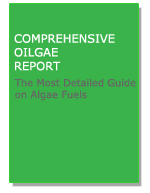Nature gave us oil from algae; perhaps we should try Nature’s way again
Red Algae
The Rhodophyta (red algae) are a distinct eukaryotic lineage
characterized by the accessory photosynthetic pigments phycoerythrin,
phycocyanin and allophycocyanins arranged in phycobilisomes, and the absence
of flagella and centrioles. This is a large assemblage of between 2500 and
6000 species in about 670 largely marine genera that predominate along the
coastal and continental shelf areas of tropical, temperate and cold-water
regions. Red Algae are ecologically significant as primary producers,
providers of structural habitat for other marine organisms, and their
important role in the primary establishment and maintenance of coral reefs.
Some red algae are economically important as providers of food and gels. For
this reason, extensive farming and natural harvest of red algae occurs in
numerous areas of the world.
Red marine algae have been a valued food in Asia for
thousands of years due to its highly nutritious qualities. Carrageenans, a
family of polysaccharide compounds extracted from algae, have been studied
for their unique properties. In vitro studies show that carrageenans aid in a
cell's natural defense by significantly minimizing the binding of unfriendly
proteins to the cell's surface.
Among the algae that can invade freshwater ponds and
aquaria, red algae from the division Rhytophyta, can be the most frustrating.
This furry, thread-like flora attaches to various aquarium surfaces including
the edges of plant leaves, filter tubes and even gravel. It may have many
colors (purple, gray-green, black) and resembles beard hair or fur.
In Asia, rhodophytes are important sources of food, such
as nori. The high vitamin and protein content of this food makes it
attractive, as does the relative simplicity of cultivation, which began in
Japan more than 300 years ago. Some rhodophytes are also important in the
formation of tropical reefs, an activity with which they have been involved
for millions of years; in some Pacific atolls, red algae have contributed far
more to reef structure than other organisms, even more than corals
Red algae have a number of general characteristics that in
combination distinguish them from other eukaryotic groups:
* absence of flagella and centrioles
* floridean starch as a storage product and the storage of starch in the cytoplasm (Figure 2)
* phycoerythrin, phycocyanin, and allophycocyanin as accessory pigments
* unstacked thylakoids in plastids (Figure 3)
* no chloroplast endoplasmic reticulum
Preventing and Eliminating Red Algae
The principle methods are: pre-treatment of plants with bleach,
reduction of water column nutrients, algae eating animals and copper algicide
Web Resources
- Aquarium Algae: Frequent Aquarium Questions
- Control of Red Algae in the Freshwater Aquarium: The most likely reason for red algae is introduction of contaminated plants or a bag of fish from a store tank with red algae. This can come in as some small filaments floating in the water, as water born spores or perhaps in the digestive tract of fishes. Once deposited into a suitable aquarium environment, they may become established. It is evident from the picture of Simon's lush planted aquarium in the May FAMA that this was the case
- Saltwater Aquarium:
- Red Slime Algae: Red slime algae is actually not a "true" algae at all, but classified as a cyanobacteria. Often considered to be the evolutionary link between bacteria and algae, Cyanobacteria are one of the oldest forms of life on earth and date back at least 3.5 billion years. These organisms produce oxygen as a byproduct of Photosynthesis and scientists believe that if it weren't for this microscopic organism, there would be no blue skies on Earth.
- Saltwater Aquarium Algae: Algae growth in your saltwater aquarium is natural. They can either be good or bad depending on whether or not they become unmanageable and get out of control.
- Salt Water Aquarium Guide: A simple guide to start your own Saltwater Aquarium -- Marine Macroalgae.
- Red Algae - Saltwater, Marine, Calcified Red Algae: The Rhodophyta (red algae) are a distinct eukaryotic lineage characterized by the accessory photosynthetic pigments phycoerythrin, phycocyanin and allophycocyanins arranged in phycobilisomes, and the absence of flagella and centrioles. This is a large assemblage of between 2500 and 6000 species in about 670 largely marine genera that predominate along the coastal and continental shelf areas of tropical, temperate and cold-water regions. Red algae are ecologically significant as primary producers, providers of structural habitat for other marine organisms, and their important role in the primary establishment and maintenance of coral reefs. Some red algae are economically important as providers of food and gels. For this reason, extensive farming and natural harvest of red algae occurs in numerous areas of the world.
- Rhodophyta (red algae): Red algae are ecologically significant as primary producers, providers of structural habitat for other marine organisms, and their important role in the primary establishment and maintenance of coral reefs. Some red algae are economically important as providers of food and gels. For this reason, extensive farming and natural harvest of red algae occurs in numerous areas of the world.
- Red Algae: Red algae are mostly large, many celled algae. The red algae's red pigment blocks off the color of chlorophyll. One species of algae is eaten in Japan and another species of algae is used to make agar. Red algae can be 30-100 cm attached to rocks and shells.
- Rhodophyta: The Rhodophyta are a moderately diverse, but extremely ancient, group of marine organisms
- Why can red algae live in deeper water? its a certain characteristic im looking for?:
- Types of algae:
- Algae Propagation, Control Information, and Pictures:
- BryantLabs - Red Marine Algae,alternative treatment for Herpes Simplex: Alternative treatments for herpes simplex including Red Marine Algae and other Nutritional Products.
- The world of algae: Basic information on algae
- Algae Description And Types: Red algae are a traditional part of oriental cuisine. There are 4000 known marine species of red algae
- Nuisance Algae: Algae is the bane of every aquarium owner. Algae grows in every healthy aquarium, no matter how well, or how often the tank is cleaned. There is absolutely no safe way to completely prevent or stop the growth of algae. Once it starts to grow in an aquarium, it does so very rapidly. A small patch of algae can triple in size in a few days. When one of our clients calls and informs us that their aquarium is "dirty", we know they’re referring to algae growth on the tank, or on the gravel or decorations.
- Algae Notes and Articles: This section is designed to provide hobbyists with useful information prepared by the AquaTouch staff.
- Removing Algae in saltwater tank:
- The Suprising Health Benefits of Algae: Here is a brief explanation of the different types of algae that are currently available.
- Red Marine Algae by Pure Planet: Red Marine Algae combines the antiviral properties and the nutritional benefits of Red Marine Algae and Spirulina creating a 100% pure whole food tablet using no binders, fillers or tableting aids.
- Benefits of Red Marine Algae: Red marine algae has been a valued food in Asia for thousands of years due to its highly nutritious qualities. Carrageenans, a family of polysaccharide compounds extracted from algae, have been studied for their unique properties. In vitro studies show that carrageenans aid in a cell's natural defense by significantly minimizing the binding of unfriendly proteins to the cell's surface.
- Red marine algae benefits against herpes: Red marine alga has been shown to have significant inhibitory effects against herpes.
Other Related Sections
Blue
Green Algae, Red Algae,
Green
Algae, Marine
Algae, String
Algae, Pond
Algae, Pond
Algae Control, Algae Control;
Algae – World of
Algae
Energy
Portal – Discussed topics such as alternative & renewable energy,
peak oil, energy industry inventions & discoveries, and more.
Energy Sources - Main Sections






